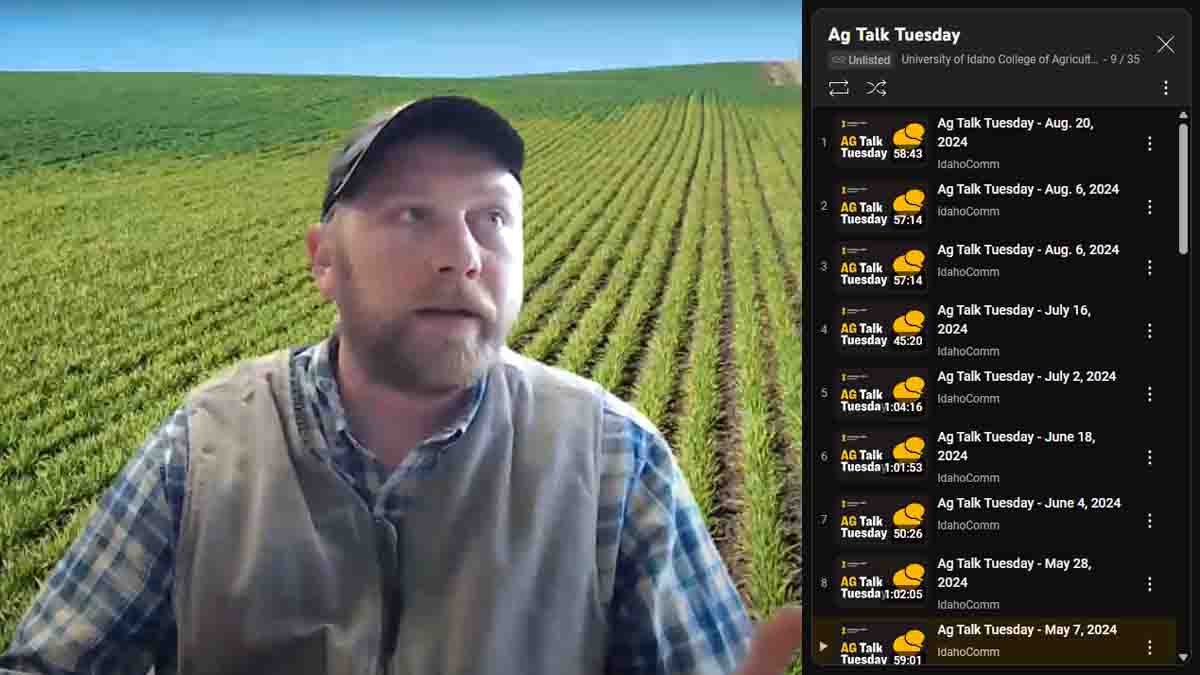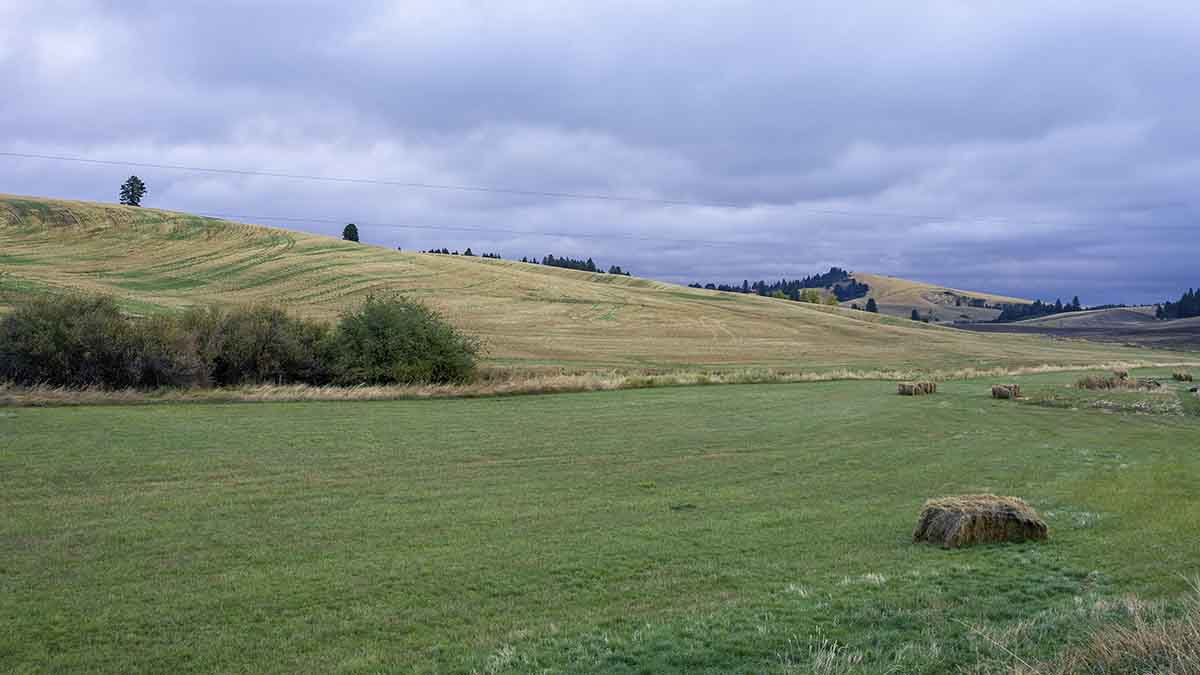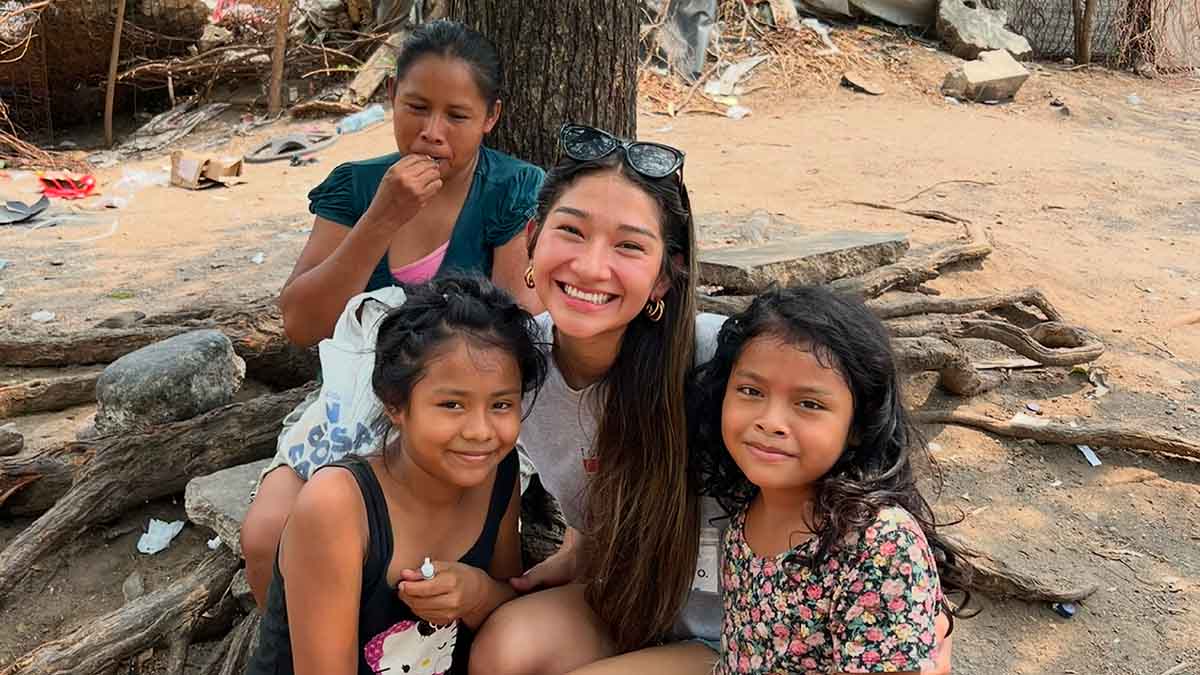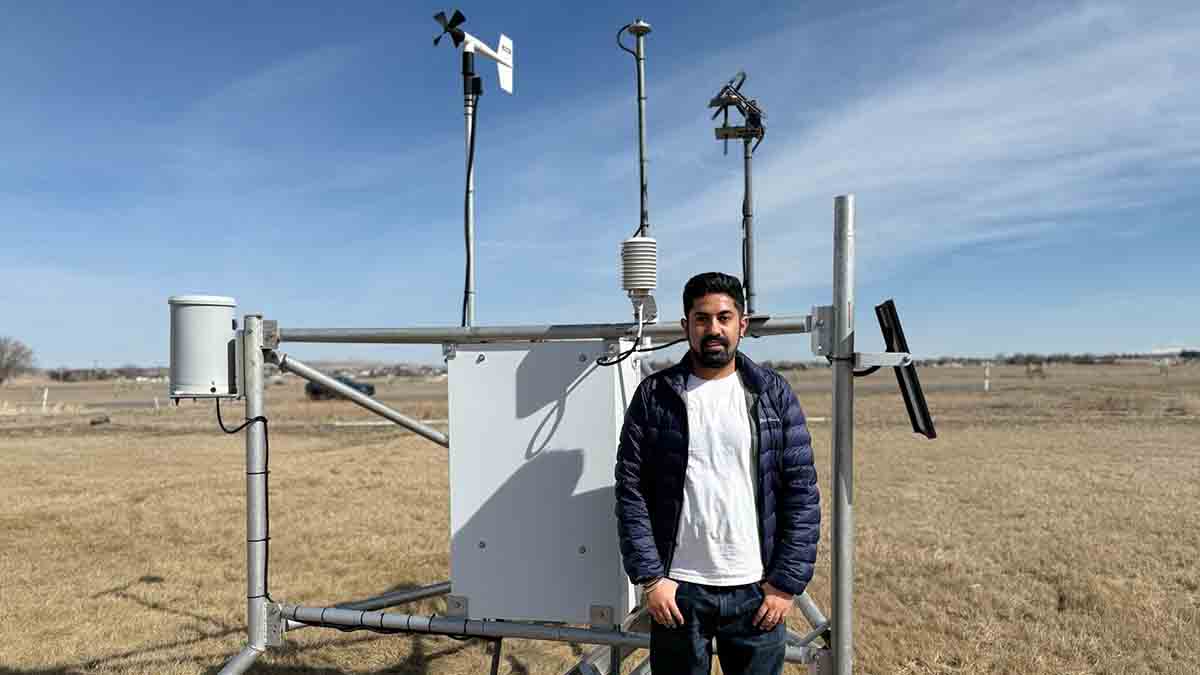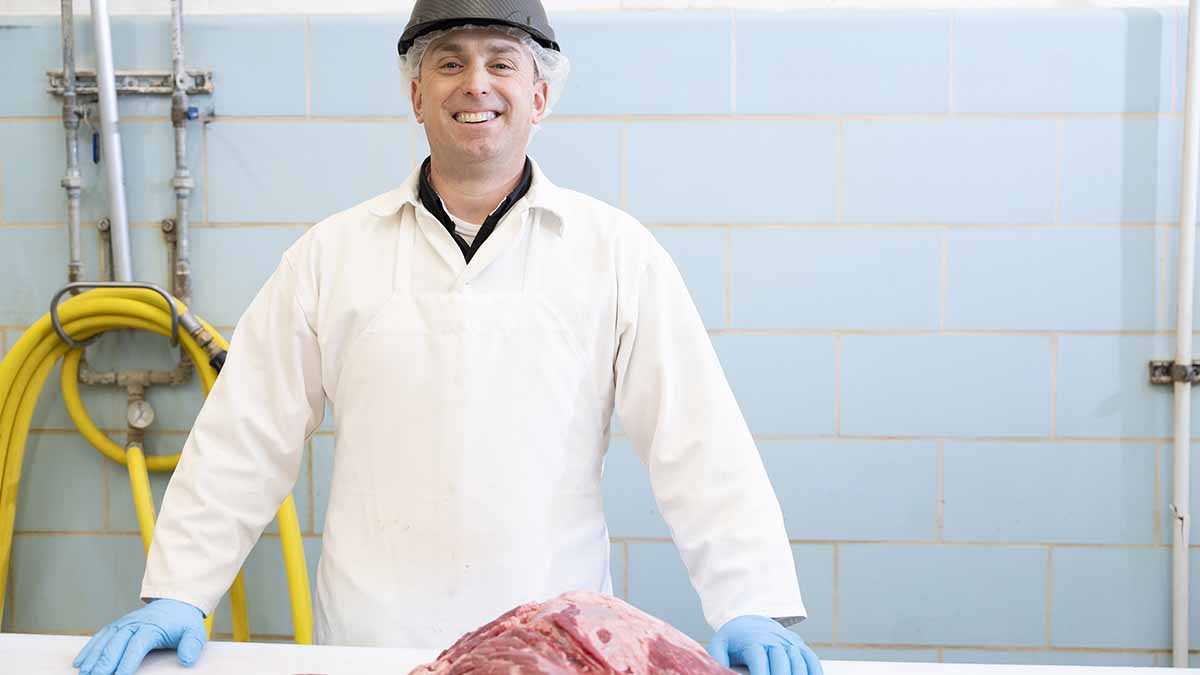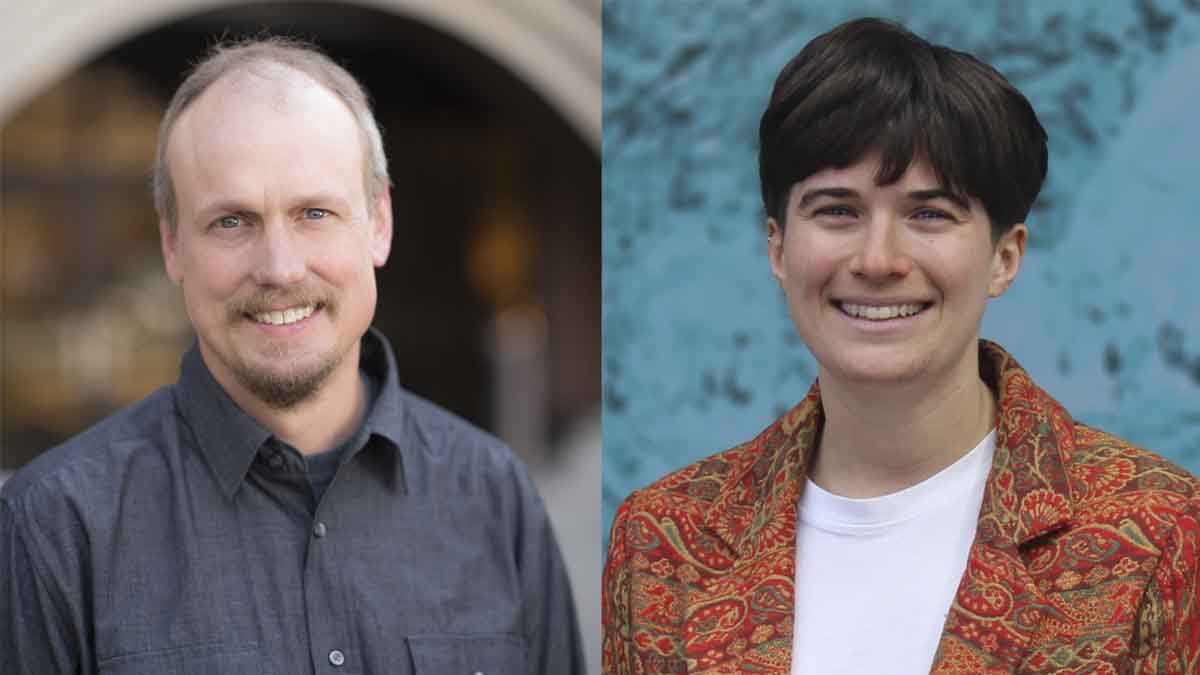Catching Up with CALS — March 19, 2025
Dean's Message — Endowed and Proud
CALS has emerged as the campus leader in using endowments as a tool for attracting elite faculty while also advancing college initiatives and solidifying relationships with industry partners. During my nine years as dean, CALS has nearly tripled its endowed faculty positions, demonstrating that our stakeholders recognize the importance of outstanding faculty who deliver research, Extension and education programming. Profit margins in agriculture are often tight, yet many agricultural producers have prioritized supporting several endowed positions within CALS through checkoff fees to their commodity organizations. And these faculty endowments represent major investments — $1 million for an endowed professorship, $2 million for an endowed chair and $3 million to fund a presidential endowed chair. Endowments often honor an established faculty member who is recognized as a true difference-maker in agriculture. Simultaneously, the naming of the endowment can also recognize a leader who has left a legacy of contributions to the industry financing the endowment. The University of Idaho Foundation holds these endowments and determines the annual disbursement rate, which is usually around 4%. The endowed faculty member can use the funds at his or her discretion in support of programming. Any return more than the annual disbursement is invested back into the endowment.
The Idaho Wheat Commission has endowed three positions: Juliet Marshall, associate director of the Idaho Agricultural Experiment Station, holds the Potlatch Joe Anderson wheat agronomy endowed professorship; Jianli Chen, a plant sciences professor based at U of I’s Aberdeen Research and Extension Center, is the Blaine Jacobson endowed professor of wheat breeding; and Xiaoli Etienne, an associate professor within the Department of Agricultural Economics and Rural Sociology, is the Bill Flory endowed chair in commodity risk management. Jared Spackman, an assistant professor and Extension specialist in barley agronomy, holds the Idaho Barley Commission’s endowed barley agronomy professorship. Gustavo Teixeira, an assistant professor and Extension specialist based at the U of I’s Kimberly Research and Extension Center, holds the Wayne and Peggy Thiessen potato endowed research professorship focused on potato storage technology, supported by the Thiessen family and the Idaho Potato Commission (IPC).
CALS also holds the only endowed deanship on campus and recently announced the campus’s first presidential endowed chair. The $3.2 million Saad Hafez presidential endowed chair in nematology was made possible by the generous donations of stakeholders such as J.R. Simplot Company Foundation, Amalgamated Sugar Co., McCain Foods, the IPC and the Nyssa-Nampa Sugarbeet Growers Association. Hafez, who retired in October, laid the foundation for our nematology program, establishing our first nematology lab in Parma in 1981. We anticipate the endowment, along with the opening of the state-of-the-art Idaho Center for Plant and Soil Health last fall (with a laboratory dedicated to nematology), will help us recruit an elite candidate to continue building our nematology program. In November we announced the establishment of the J.R. Simplot Endowed Dean of the College of Agricultural and Life Sciences. I have the privilege of being the first to hold the title, which will pass on to the next dean after I retire in June. The J.R. Simplot Family Foundation’s contribution pays homage to the Idaho-based agribusiness company’s founder, the late J.R. Simplot, and the Simplot family’s legacy within Idaho agriculture and with U of I. Annual distributions from the endowment will support the CALS dean’s priorities in perpetuity.
We’re in the process of growing an endowment to honor Mike Thornton, who will retire at the end of March as a professor in the Department of Plant Sciences based in Parma. Filling Thornton’s position with another world-class researcher is a top priority of Idaho’s potato and onion industries, which have benefited greatly from his applied research to resolve production issues, his focus on cultural management of new potato cultivars and his emphasis on thrips control to reduce onion decay in storage. We’re seeking to increase our Hunt Family Beef Education and Research Endowed Professorship from $1.7 million currently to $2 million, and we’d like to hire a new faculty member to fill the position in 2026. The endowment, currently held by Extension beef specialist John Hall, honors Carl Hunt. Hunt, a former head of the Department of Animal, Veterinary and Food Sciences, died in September 2021. Carl and Martha Hunt established the endowment in 2013 with the goal of ensuring continued commitment to beef cattle education and research at U of I. Yet another priority for the near future will be hiring an endowed faculty position specializing in soils, with the John M. Otter endowed professorship.
Through our strategic use of endowments, we’ve addressed crucial needs of our industry partners while strengthening our ties with them, and we’ve made job openings far more enticing to elite candidates. “Yes, having an endowment definitely makes a position a lot more attractive,” Etienne said of her decision to accept her position in commodity risk management. “The industry relationship is one part of it I see that’s really important. It allows me to engage with the stakeholders and make my work a lot more impactful.” Etienne used endowment funds to hire an undergraduate student to oversee the agricultural commodity risk management program social media accounts, which led to coverage by the agricultural trade media. Etienne has brought industry speakers to campus using endowment funds. The endowment has also funded real-world experiences for students in the program, including industry tours spanning from the Snake River dams at the Port of Lewiston to export terminals and the Wheat Marketing Center in Portland, Oregon.
These endowments represent opportunities both for our college and for the industries we serve. It’s important that they have a high profile to remind stakeholders of the return on their investments and to celebrate the accomplishments of the people they honor. When we host events, bring in speakers, hire graduate students and otherwise invest endowment proceeds, we raise the profile of those endowments and elevate our odds of securing support for future endowments. Let’s tell anyone who will listen about how our stakeholders have advanced our mission. There’s power in gratitude and remembrance.

Michael P. Parrella
Dean
College of Agricultural and Life Sciences
By the Numbers
Canola is a major crop in the Pacific Northwest. Idaho’s canola acreage increased 43% in 2023, with Lewis County ranking as the state’s No. 1 canola producer with 22,000 acres. University of Idaho is involved in canola development and research and has a winter canola variety trial on the Camas Prairie in Lewis County. On May 23, 2024, U of I and the Pacific Northwest Canola Association collaborated to host the first Camas Prairie Winter Canola Tour, which included stops at the U of I winter canola variety trial and an industry-sponsored winter canola variety trial. The tour drew 58 attendees from 4 states — Idaho, Washington, Montana and Kentucky. Participants completed a survey and reported making management decisions over a combined 34,000 acres, and 81% of respondents indicated they learned new information during the tour that they will apply to their operations. Another tour will be offered in 2025.
Our Stories

Ag Talks Returning
University of Idaho Extension has announced the schedule for the 2025 season of Ag Talk Tuesday — a bimonthly, virtual forum including presentations by agricultural experts and roundtable discussions about current growing conditions.
Sessions spanning from 11 a.m. to noon MST are hosted via Zoom on the first and third Tuesdays from May through August. Advanced registration is required.
Each session starts with an informal group discussion of current crop issues involving U of I personnel and industry attendees. Guest speakers present on a featured topic during the second half of the program.
Ag Talk Tuesday started in 2018 with in-person sessions that rotated among southeast Idaho communities. Extension offered a hybrid program in 2019, continuing with face-to-face sessions while also enabling participants from elsewhere in the state to join online. The program became fully virtual beginning in 2020 and has remained fully virtual ever since.
"Ag Talk Tuesday helps provide near real-time information on current season crop production in Idaho, while also providing informative presentations on relevant topics,” said Kasia Duellman, an Extension seed potato specialist who was the program’s original organizer. “In the sessions, attendees might learn about steps to take to protect crops from current pests and diseases, the status of irrigation resources and fertility strategies, as well as fascinating topics like weed seed banks, how to promote beneficial organisms and current economic outlooks.”
Other Extension faculty who have been involved in coordinating the program include Juliet Marshall, a professor of cereal pathology and associate director of the Idaho Agricultural Experiment Station; Douglas Finkelnburg, area Extension educator of cropping systems, Nez Perce County; and Pam Hutchinson, who recently retired as a potato cropping systems weed scientist.
Interest in the program has grown steadily throughout the years, from a combined 61 people participating in the inaugural year’s sessions to 347 total attendees in 2024.
The following topics and speakers have been scheduled for the upcoming season:
- May 6 — Water update; speaker Keith Esplin, executive director of Eastern Snake Plain Aquifer Recharge and Eastern Idaho Water Rights Coalition, host Doug Finkelnburg
- May 20 — Innovative Agricultural and Marketing Partnership (IAMP) implementation; Doug Finkelnburg host and speaker
- June 3 — Topic to be determined; host Juliet Marshall
- June 17 — Showcasing J.R. Simplot Endowed Dean Michael Parrella, a look at his career at U of I; speaker Dean Michael Parrella, host Juliet Marshall
- July 1 — Remote sensing and weed seed banks; speaker Joaquin Casanova, research engineer with the USDA Agricultural Research Service’s Northwest Sustainable Agroecosystems Research Unit in Pullman, Washington, host Kasia Duellman
- July 15 — Creating beneficial arthropod habitats on farms; speakers Brad Johnson and Blake Mathews of The Nature Conservancy, host Juliet Marshall
- Aug. 5 — Topic to be determined; host Kasia Duellman
- Aug. 19 — Idaho crop profitability outlook; speaker Patrick Hatzenbuehler, U of I associate professor and Extension specialist of crop economics, host Juliet Marshall

Straw Study
University of Idaho Extension Educator Grant Loomis has noticed an increasing number of Blaine County farmers have been letting their straw rot in the field after grain harvest rather than baling and selling it.
A recently published UI Extension and U.S. Department of Agriculture cooperative study suggests there may be wisdom in the seemingly counterintuitive management approach.
The paper, “Understanding the Mineral and Nutrient Value of Wheat Residue,” concludes nutrients in straw that growers leave in the field can be worth upwards of two-thirds of the revenue obtained from harvesting that straw and selling the bales. Baled straw is commonly purchased for uses including mushroom cultivation, insulation, making compost and animal bedding. In addition to lending nutrient value, straw left in the field packs several agronomic benefits that are harder for growers to quantify, such as improving soil organic matter, bolstering soil microbial activity, curbing erosion and improving water infiltration into soil.
The straw studies followed up on Loomis’ 2017 master’s thesis project, which was funded by the Idaho Barley Commission and evaluated the efficiency with which plants take up nitrogen when it is tilled into the soil versus broadcast on the surface. Loomis and his colleagues found roughly a quarter to half of nitrogen applied in the study made its way into straw tissue, depending on crop variety and fertilizer application method.
“We saw there was nitrogen in the straw from what I did, and we had the question of what real value does that have to farmers of leaving that straw on the soil, incorporating it into their soil or taking it off and baling it,” Loomis said.
Loomis was still a graduate student when he helped with data collection for straw-study field trials in 2018 and 2019. Other co-authors included Juliet Marshall, Patrick Hatzenbuehler, Biswanath Dari and Olga Walsh with U of I and Curtis Adams, Christopher Rogers and David Tarkalson with USDA’s Agricultural Research Service. Their research was based on replicated trials at the U of I Aberdeen Research and Extension Center and commercial fields in Soda Springs, Rupert, Idaho Falls and Ashton.
Summaries of the key findings were published in the November and December 2024 edition of the American Society of Agronomy’s “Crops & Soils” magazine.
Based on an average yield of 120 bushels per acre of wheat, the researchers estimated the straw contained the equivalent of 38 pounds of nitrogen, 2 pounds of phosphorus and 201 pounds of potassium per acre.
“That was the question that was really unanswered before — it was unknown how much nutrients are in the straw,” Hatzenbuehler said.
During 2023, Hatzenbuehler, an Extension specialist of agricultural economics, made economic calculations for the study, which he presented Feb. 5 during the East Idaho Cereals Conference hosted in Fort Hall. Based on a wheat yield of 120 bushels per acre and using historical average nutrient prices, Hatzenbuehler estimated the value of nutrients in straw left as residue on fields at $77 per acre. Barley straw nutrient values were slightly less, at about $60 per acre.
By comparison, he calculated that farmers could make $122 per acre by selling wheat straw — assuming a straw price of $55 per ton, based on USDA Agricultural Marketing Service reports from January 2025, and an average yield of 2.47 tons of straw per acre from a 100-bushels-per-acre crop. To determine the net profit from such a sale, one would need to account for the costs of baling, hauling, and selling the straw. Grain growers commonly hire contractors to bale and haul their straw, which cuts into profits from selling it.
Hatzenbuehler’s estimates also did not factor in the value of micronutrients contained in straw, such as magnesium and sulfur, or soil-health benefits of leaving straw. USDA has begun research to answer questions about when nutrients from straw become available to crops.
Many farmers in southern Idaho have baled and sold straw for decades, which has depleted their soils of potassium. Some of the region’s farmers have recently resorted to leaving straw on their fields as a means of replenishing their soil potassium.
“This puts the spotlight on a potentially unfavorable long-term economic tradeoff,” Loomis said. “The value of keeping that straw on the farm rather than harvesting and selling it needs to be considered.”
Individual circumstances have a strong bearing on whether keeping or selling straw makes the most economic sense for a farmer. For example, a farmer may need to sell straw to have cash on hand to repay an operating loan. Furthermore, farmers have less certainty regarding how long it may take for nutrients in straw to break down into a plant-available form.
Another potential pitfall of leaving straw in the field is the potential for it to harbor diseases and carry inoculum into the next growing season — a phenomenon plant pathologists describe as a “green bridge.” Diversifying crop rotations is a proven strategy toward avoiding such disease challenges.

Return to Guatemala
Amaranth — a nutty-flavored and nutrient-dense pseudo-grain containing all nine essential amino acids — was a staple in the Guatemalan diet before the Central American country was colonized.
Assistant Professor Ginny Lane, with University of Idaho’s Margaret Ritchie School of Family and Consumer Sciences (FCS), and a team of food and nutrition students hope to play a role in the superfood making a comeback on dinner tables in the rural Gualán area of eastern Guatemala.
Ten U of I students and three FCS faculty members — including Lane, Instructor Chelsey Lewallen and Assistant Professor Sarah Deming — are scheduled to depart on a 10-day humanitarian return trip to the town in the Guatemalan department of Zacapa on May 11.
Lane and her students will host workshops teaching Guatemalan locals how to sustainably improve their diets by raising nutritious native plants, such as amaranth, and incorporating them into their diets.
“Most of these students have not been exposed to what they’re going to see on this trip — the level of poverty some people live in,” Lane said. “These trips are life changing. They really help them to see life differently.”
Faces and Places
Dinesh Gulati, a doctoral student studying under Meetpal Kukal, an assistant professor of hydrologic science and water management, has received the Joseph Jordan Idaho Water Resources Research Institute (IWRRI) Student Research Fellowship. Jordan was a longtime member of the Idaho Water Resource Board who served as its chairman during negotiations for the Nez Perce Agreement, which settled water rights claims predating the tribe’s 1855 treaty with the U.S. government. Gulati will receive a $3,500 stipend toward a research assistantship this summer to work with U.S. Department of Agriculture Agricultural Research Service Northwest Irrigation and Soils Research at Kimberly to revisit their historical datasets with improved methodologies that he has developed in his doctoral research. The goal is to finetune water consumption estimates for many crops under different management systems for southern Idaho.
Ryer Becker, an Extension specialist of forest operations and products manufacturing, and Extension educator Lauren King, Benewah County, are teaming up with local loggers and forest industry professionals to host “Live in the Woods,” a career field day for middle school and high school students. The event will be hosted April 17-18 in St. Maries and will include hundreds of students. The event aims to educate students about the forest products industry as a whole and the vital role it plays in Idaho as well as introduce them to different career paths related to the forest products industry including forestry, logging, hauling, products manufacturing and other industry support services.
Phil Bass, an associate professor of meat science in the Department of Animal, Veterinary and Food Sciences, is featured in season nine, episode three of The Vandal Theory podcast. The episode, “Beef it’s What’s for Dinner and for Science,” was published on March 8.
Erin Brooks, an agricultural engineer and professor in the Department of Soil and Water Systems, was recently featured in episode 31 of the podcast We Measure the World. His episode is titled “The Fight Against Soil and Nutrient Loss.” His current research focuses on the management of ecosystems through the combination of field experiments and modeling.
Christa Howarth, UI Extension water outreach instructor, recently joined Idaho Matters to discuss water usage in the Treasure Valley.




Events
- March 19, April 16 — 2024-2025 Heritage Orchard Conference, Online
- March 20 & 24 — Plan the Garden, Preserve the Harvest, Online
- March 25 — Our Gem Speaker Series: Cougar Bay Wetlands Restoration, Online
- March 27 — Boiling Water Canning Basics, Online
- April 1-2 — Vandal Giving Day, Online
- April 7 — CALS Speaker Series, Moscow
- April 17 — Pressure Canning Made Easy, Online
- April 30 — CALS Awards Banquet, Moscow







